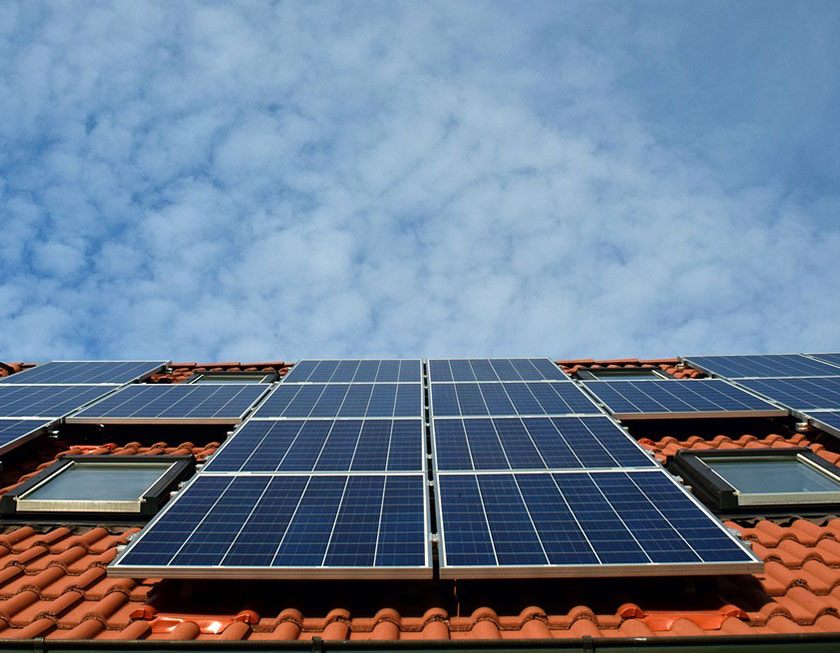4.0 Solar photovoltaics: The best solution to reverse the climate change

In the previous article, we discussed how solar photovoltaics technology had been impressing the world with an unexpected growth in the cumulative capacity. It was evident that the concentrating solar thermal technology was being trampled by increasingly efficient photovoltaic technology.

How photovoltaic technology did it?
Well. Let us discuss in details.
First of all, we need to have a pretty good grasp on how photovoltaic technology has been evolving. Then it would be easy to understand how it succeeded in the energy industry.
Evolution of solar photovoltaics technology
Following is some historical milestones reached by the solar photovoltaic technology in the past.
- 1839: The photovoltaic effect was first discovered by a French scientist Edmond Becquerel for the first time [1]. It laid the foundation stone of a new era leading to a greener world.
- 1873: Willoughby Smith discovered photoconductivity in selenium [2]. It was the second step in making practically viable solar cells.
- 1876: Richard Evans Day and William Grylls Adams found that selenium was capable of converting light into electricity. It was not efficient enough at converting sunlight into electricity, however, it was the very first time to observe a solid material generating electricity upon exposure to light [3]. So, this discovery was a mammoth leap towards a state of the art renewable energy technology.
- 1883: The first solar cell was built and described by an American inventor Charles Fritts. His technology was based on selenium wafers [4].
- 1916: Polish engineer Jan Czochralski introduced a method to grow single-crystal silicon [5]. His discovery led to fabricate more efficient single crystal silicon solar cells.
- 1932: Photovoltaic effect was discovered in CdS by Audobert and Stora [6]. His discovery paved the way for a new type of solar cells such as CdS/CdTe.
- 1953: Dr. Dan Trivich who had been working in Wayne State University made the first theoretical calculation of conversion efficiencies of different materials with different band gaps based on the spectrum of the Sun [7].
- 1954: Bell laboratories brought to light information about a groundbreaking discovery. They proved that silicon was more efficient than selenium at converting light into electricity demonstrated a solar module which was the first ever solar module capable of generating a viable amount of electricity [8].
- 1957: Hoffman electronics claimed to have developed 8% efficient solar cells [9].
- 1958: Hoffman electronics claimed to have developed 9% efficient solar cells [10].
- 1959: Hoffman electronics claimed to have developed 10% efficient solar cells [11].
- 1960: Hoffman electronics claimed to have developed 14% efficient solar cells [12].
- 1962: The first commercial telecommunication satellite, Telstar was launched by Bell telephone laboratories [13]. It was the first commercial use of solar cells in space.
- 1966: The first astronomical observatory (orbiting around the Earth) with a 1 kW photovoltaic array was launched by NASA [14].
- 1976: David Carlson and Christopher Wronski developed the world’s first amorphous silicon photovoltaics which had an efficiency of 1.1% [15].
- 1978: The world’s first village-based solar photovoltaic system (For residents of Schuchuli) was installed with a capacity of 3.5 kW. The system had been providing electricity needed for lighting, refrigeration, and water pumping until the village was connected to the national grid. In addition, the project had had a communal washing machine and sewing machine. This project can be seen as a paradigm of stand-alone solar photovoltaic village system [16].
- 1982: World’s first megawatt-sized solar photovoltaic project developed by ARCO Solar, began its operation. Covering 20 acres of land and employing dual-axis solar trackers, it had a record capacity of 1 MW [17].
- 1990: University of South Wales announced to have exceeded 20% efficiency limit under space illumination for silicon solar cells [18].
- The 1000-roof program in Germany was launched [19]. Its success triggered a chain reaction in solar photovoltaic installations, all over the world.
1992: Braking the efficient limit of 15%, University of South Florida announced 15.9% efficient thin film solar cells (CdTe) [20]. - 1994: The first two-terminal monolithic cell to exceed 30% efficiency limit was announced. Unlike conventional silicon solar cells, they were made of gallium indium phosphide and gallium arsenide. The efficiency peaked at 30.2% in a concentration range of 140-180 suns owing to increase in the open circuit voltage and fill factor [21].
The darkest hour is just before the dawn
Solar photovoltaic technology was too expensive for terrestrial applications even in the 1990s. Therefore, it was not used if grid electricity was available. However, the technology was quite technically feasible in remote locations where grid electricity was not available. Thanks to such applications, the cumulative solar photovoltaic capacity had been growing but only at a snail’s pace until beginning of the 21st century. Thereafter, the growth in the world’s cumulative photovoltaic capacity has been drawing an exponential line! This unexpected growth can be largely attributed to the increasing light-to electricity efficiency, cost reduction and also the increasing price of fossil fuels and environmental concerns over fossil fuel burning. In the next article, let us discuss how photovoltaic technology has been evolving from the end of the 20th century.
Reference
[1] Shah, A., Torres, P., Tscharner, R., Wyrsch, N., & Keppner, H. (1999). Photovoltaic technology: the case for thin-film solar cells. science, 285 (5428), 692-698.
[2] Jenkins, T. (2005). A brief history of… semiconductors. Physics education, 40 (5), 430.
[3] Bilal, M., Arbab, M. N., Afridi, M. Z. U. A., & Khattak, A. (2016). Increasing the Output Power and Efficiency of Solar Panel by Using Concentrator Photovoltaics (CPV). International Journal of Engineering Works, 3 (12), 98-102.
[4] Jean, J., Brown, P. R., Jaffe, R. L., Buonassisi, T., & Bulović, V. (2015). Pathways for solar photovoltaics. Energy & Environmental Science, 8 (4), 1200-1219.
[5] Lukanin, D., Kalaev, V., & Zhmakin, A. (2003, September). Parallel simulation of Czochralski crystal growth. In International Conference on Parallel Processing and Applied Mathematics (pp. 469-474). Springer, Berlin, Heidelberg.
[6] Raval, N., & Gupta, A. K. (2015). Historic Developments, Current Technologies and Potential of Nanotechnology to Develop Next Generation Solar Cells with Improved Efficiency. International Journal of Renewable Energy Development, 4 (2).
[7] Gupta, M., & Hasan, M. H. (2014). Design of a Large Effective Area Octagonal Photonic Crystal Fiber (Doctoral dissertation, East West University).
[8] Goetzberger, A., & Hebling, C. (2000). Photovoltaic materials, past, present, future. Solar energy materials and solar cells, 62 (1-2), 1-19.
[9] Nusbaumer, H. (2004). Alternative redox systems for the dye-sensitized solar cell.
[10] Meissner, D. (2013). Photovoltaics based on semiconductor powders. Materials and Processes for Energy: Communicating Current Research and Technological Developments.
[11] Fraas, L. M. (2014). History of solar cell development. In Low-Cost Solar Electric Power (pp. 1-12). Springer, Cham.
[12] Petrova-Koch, V. (2009). Milestones of solar conversion and photovoltaics. In High-Efficient Low-Cost Photovoltaics (pp. 1-5). Springer, Berlin, Heidelberg.
[13] 1962: The first telecommunication satellite, Telstar was launched by Bell telephone laboratories
[14] Hegedus, S. S., & Luque, A. (2003). Status, trends, challenges and the bright future of solar electricity from photovoltaics. Handbook of photovoltaic science and engineering, 1-43.
[15] Fraas, L. M. (2014). History of solar cell development. In Low-Cost Solar Electric Power (pp. 1-12). Springer, Cham.
[16] Rosenblum, Louis, et al. “Photovoltaic power systems for rural areas of developing countries.” Solar Cells 1.1 (1979): 65-79.
[17] Jewell, W. T. (1989). Electric utility experience with solar photovoltaic generation. IEEE Transactions on Energy Conversion, 4 (2), 166-171.
[18] Wang, A., Zhao, J., & Green, M. A. (1990). 24% efficient silicon solar cells. Applied physics letters, 57 (6), 602-604.
[19] Imamura, M. S. (1994). Grid-connected PV plants: field experiences in Germany and a pursuit of higher solar energy collection efficiency. Solar energy materials and solar cells, 35, 359-374.
[20] Kumavat, P. P., Sonar, P., & Dalal, D. S. (2017). An overview on basics of organic and dye sensitized solar cells, their mechanism and recent improvements. Renewable and Sustainable Energy Reviews, 78, 1262-1287.
[21] Friedman, D. J., Kurtz, S. R., Bertness, K. A., Kibbler, A. E., Kramer, C., Olson, J. M., & Snyder, J. K. (1995). Accelerated publication 30.2% efficient GaInP/GaAs monolithic two‐terminal tandem concentrator cell. Progress in Photovoltaics: Research and Applications, 3 (1), 47-50.
